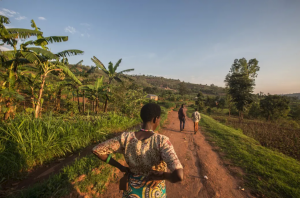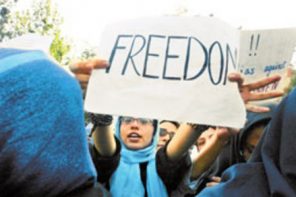I don’t have data on this–maybe my new heartthrob Ryan C Briggs can help–but I’ve just come across a trope I’m tired of. I acknowledge that I have a tendency to start denying the truth of tropes when I tired of hearing them. Usually that’s when I pick up the phone and do some good reporting. Not this morning, though. This morning I’m just going to deny it, and wait for people to call me out.
What I’m denying: That the media doesn’t cover Congo.
What I’m not denying: That the media covers Congo poorly; that the coverage spikes when there are military movements (even more than when there are terrible, FDLR-ambush-style attacks); that the stories so often lack context…
But is FAIR really right when they say Congo is so neglected? Their study analyzes media coverage of Congo, compares it to coverage of Darfur, even going so far as a “story to death count” ratio, and finds that the Congo story count comes up short. But they’re analyzing stories written in 2006. Is it really fair of FAIR (sorry, I couldn’t resist) to trot out the old “media doesn’t cover it, those bastards” story when coverage about Congo has changed so dramatically in the three years since their data set?
I don’t think it is. It’s a gut instinct, based on anecdotal evidence, but I think that’s an old, tired story. And I think one of the things the media does wrong is write old, tired stories about conflict zones. Can you think of a great piece about Darfur that lays out the changes in the political/(para)military landscape there since, say, 2005?
It’s true we journalists tend to ossify things. And I’ve definitely heard from editors before (I paraphrase), “That’s a good story, but no one here is seeing it on Google news yet. Keep it on the back burner, until someone knows enough to ask for it.” It’s always hardest to be the first person to tell the story, and once it’s out there, everyone wants to do their version of that story. But I don’t think that the useful and attentive folks who try to make media coverage better do themselves, or the media, any favors by punting around ossified criticisms.
So let’s get some ’07 and ’08 numbers and have the coverage-in-Congo debate again.




If you read the piece, you’ll notice that it looks at television coverage from 2003 through 2008 and NYT coverage from 1998 through the beginning of 2009. Looking at that data, the amount of coverage has changed very little in the last three years.
But Julie, you write things like this: “And yet, in the New York Times, which covers the Congo more than most U.S. outlets, Darfur has consistently received more coverage since it emerged as a media story in 2004 (Extra!, 1–2/08). The Times gave Darfur nearly four times the coverage it gave the Congo in 2006, while Congolese were dying of war-related causes at nearly 10 times the rate of those in Darfur.” And this: “Kristof’s distinction is spurious. Massacres have occurred in both countries, and U.N. investigations have found crimes against humanity in both; while it has found possible genocide in the Congo (U.N., 7/2/97), a U.N. commission concluded that the Sudanese government had not pursued a policy of genocide in Darfur (U.N., 1/25/05). Kristof’s depiction of the Darfur conflict occurring between an “Arab” government and militias versus “black Africans” is likewise specious; the distinction is more political than cultural or racial (Extra!, 1-2/08). Both conflicts deserve urgent diplomatic and media attention, but it’s hard to imagine what moral—or journalistic—standards could justify the dramatically limited media coverage afforded the Congo over the last 10 years.”
Almost all the data you site in your story is old–from ’05, ’06 and ’07. The most frequent ’08 attribution is to an “Extra!” issue in January 2008–which can’t include any ’08 data.
I’d also quibble with FAIR’s choice to analyze quantity of coverage rather than contextual quality, which seems to me exponentially more valuable. And your article makes no mention of the January-February coverage spurred by the joint Congo-Rwanda military operation in North Kivu, which generated a very sizable amount of coverage–and some of it very, very good. And some of that, even, in the NYT. (Although that’s another mistake: The Washington Post has an incredible foreign correspondent covering Congo; Stephanie McCrummen’s work from the region has been the gold standard for years, but you don’t seem to bother with anything other than the NYT. But that’s a methodological quibble.)
I’m all for trying to drum up more coverage of the region, but I don’t think applying interpretive frames supported by three-year-old data on the current coverage situation is useful, or fair.